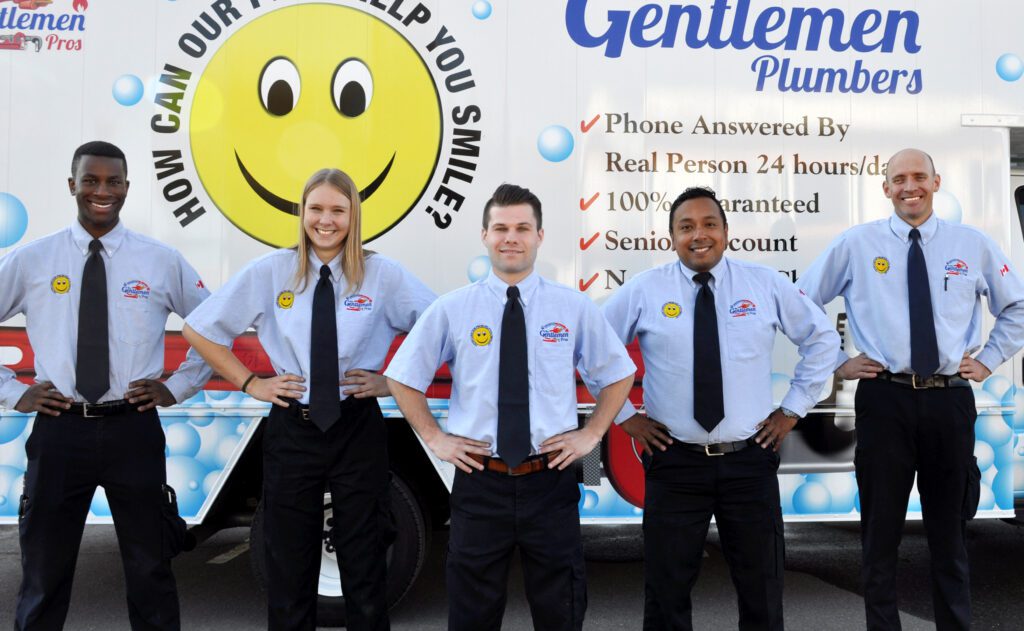Same Day Service
Since 2001
Call The Gentleman Pros Now!
(780) 809-3219

Sewer repairs are an important part of maintaining your home. Unfortunately, homeowners usually discover a problem with their sewer line when they have an emergency sewer backup.
“I had a broken drain line that took kitchen waste to the main sewer line. The repairs meant busting up some concrete to get at the broken pipe. It was a tough job to say the least. Jacob did an excellent job of explaining all the steps. The work was completed and everything was cleaned up. I am very happy with the work that was done. Also I would like to add that this company was quick to help me out of a nasty situation. I did call around to both large and small outfits and was not provided with either a quote or even a willingness for a call out so a big thanks to Gentlemen Pros for the quick response and dealing so well with a tough job. Jacob reassured me that this was a doable job which went a long way in easing my anxiety. I would 100% recommend this company.” Ruth
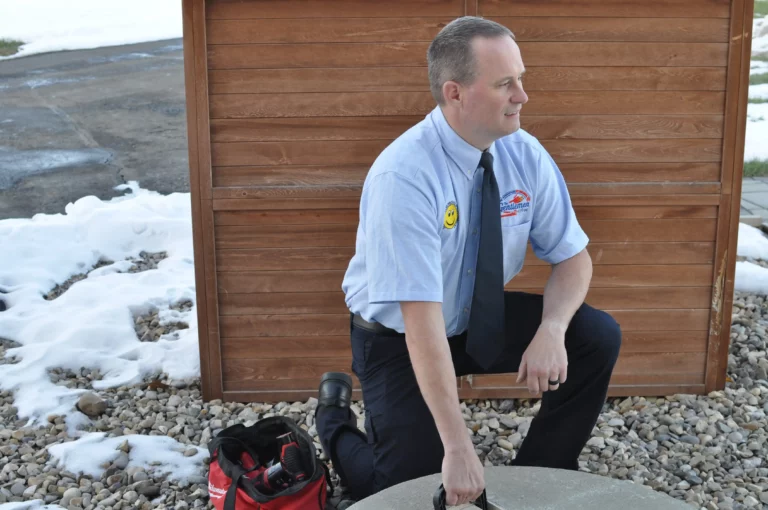
Read on to understand why and when a sewer repair is needed.
Your main sewer line is very different than your drain pipes. A problem with a drain or a clog in a drain pipe can be an easy fix. In contrast, a problem with your main sewer line is a major issue.
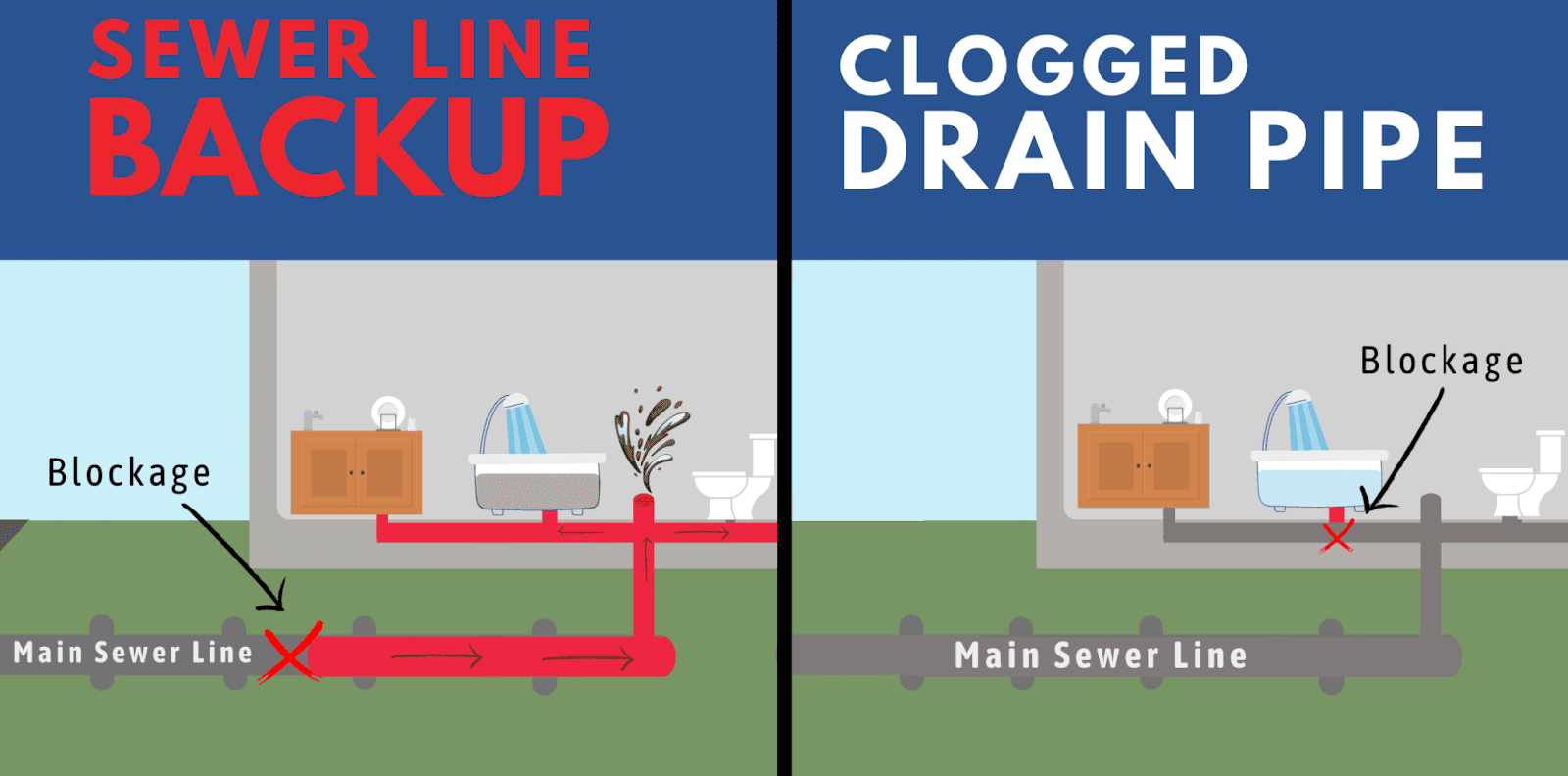
Your main sewer line is the drain that connects all of your waste to the city sewer lines.
A clog in the main sewer line often indicates that there is a problem with your main sewer line.
Schedule a sewer line camera inspection to find out if you have a problem or not. We highly recommend having a main sewer line camera inspection each year. If maintenance or repair are needed a sewer line camera inspection will help you determine what your options are.
Unless you have an emergency backup, it is hard to detect an issue with your sewer line. An emergency sewer backup is when a clog or a blockage in your main sewer line prevents wastewater from flowing to the city sewer lines or into a septic tank. Consequently, wastewater will flow back into your home.
In Edmonton, where sewer lines are buried deep in the ground, the wastewater will return to your basement during a sewer backup. The wastewater will return through the lowest drains in the house, such as a basement tub drain, a shower drain, a basement floor drain, or the main sewer cleanout.
A sewer backup or frequent sewer backups are indicators of a problem in your main sewer line.
If every drain in your house, particularly the drains in the basement drain slowing, you probably have a problem with your main sewer line. Often backups are caused by roots growing in the sewer line and creating a clog. A pipe belly, pipe collapse, or a misaligned pipe are other common causes.
If your home is more than 50 years old, you are more likely to need a sewer line replacement.
A sewer line camera inspection will indicate if your sewer lines need replacement or repair.
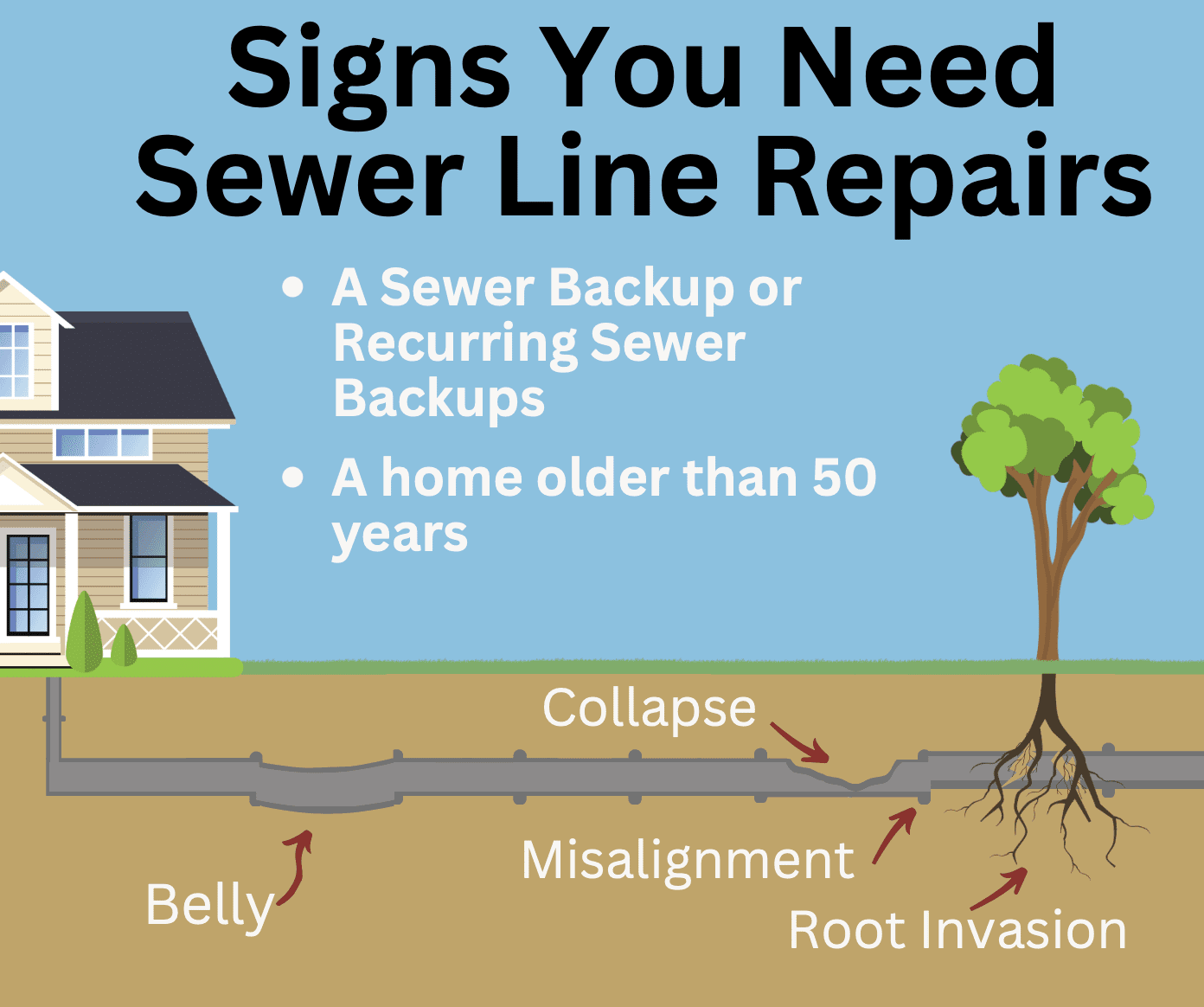

A pipe belly is when your sewer line sags. This is most likely because the ground shifted due to natural causes, such as precipitation, ground freezing, and swelling. Poor installation including not having the proper packing around the pipe could lead to a pipe belly.
A severe pipe belly is a major problem. (A small belly, isn’t as serious but requires monitoring and maintenance.)
The only way to fix a major pipe belly is to replace the sewer pipe. This requires excavation and installation of a new pipe or partial replacement.

This is not ideal when the pipe runs beneath a driveway, deck, fence, or structure. Unfortunately, it is the only way to fix the problem.
Root intrusions are common when there is a crack in the pipe leak in the seal of the pipe joint. Even a crack the size of a hair can invite roots to make their home in the sewer line pipe. Sewer lines are ideal for roots to grow because the wastewater provides water and fertilizer.

Roots in a sewer line can be removed with an auger, hydro jet, or chemical root treatment. But those are only temporary solutions.

To ensure that the roots are gone for good, the sewer line needs to be replaced or repaired. Options may include a sewer liner , a pipe replacement, or partial pipe replacement.

Rusted-out, aged, or collapsed sewer pipes require usually require a full pipe replacement. Clay, cast iron, or Orangeburg pipes were commonly used until 1970. (After 1970 plastic PVC and ABS pipes were more often used.)
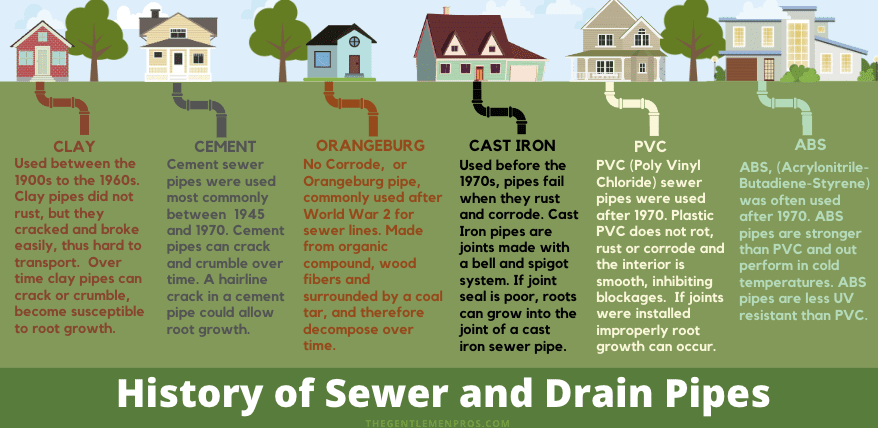
Typically, sewer pipes are designed to last 50 to 100 years, but some circumstances require sooner. A sewer line camera inspection will indicate if there are any problems. PVC and ABS pipes have a longer life span than older sewer pipes. The smooth interior of the pipe prevents clogs, and plastic pipes won’t rust.
If your sewer line has a problem within your property line you are responsible for maintaining, fixing, or replacing the sewer pipes.

In some circumstances, a tree on the city property or a neighbor’s property may send roots that end up in your sewer line. Regardless, you are still responsible for the sewer line with your property.

Sewer line maintenance is extremely important. After a sewer line is replaced or prepared, little maintenance is required.
If you choose not to replace or repair your sewer line, there are other solutions to maintain your sewer line. Keep in mind that these solutions are short-term fixes, and they do not fix the problem in the long term.
A plumbing technician can advise you on the best way to maintain your sewer line.
In addition to clogs and roots, an experienced technician will be able to identify if there are other problems in your main sewer line.

Having your sewer lines cleaned with an auger or hydro jet is a good way to maintain underground sewer lines, but this is only a band-aid fix. Often a permanent solution is to have the sewer line repaired or replaced.
Removing tree roots from a sewer line is important for sewer maintenance. If you have roots growing in your sewer line, they can be cleared using an auger, hydro jet, or chemical root treatment.

A power auger can be used to clear roots from the sewer lines. The auger has a cutting head that can cut through clogs or roots to restore flow back to the plumbing lines.
A hydro jet is a powerful tool that can push water at high pressure through the sewer line to remove clogs, buildup, and roots. A hydro jet can not be used during an emergency backup. (In Edmonton, the sewer cleanout is usually in the basement, therefore using a hydro jet during a backup would send water back and flood the basement.) In other situations where maintenance is being done preemptively, a hydro jet is a great option.
If a sewer line blockage is a result of tree root growth, a chemical root treatment is another option.
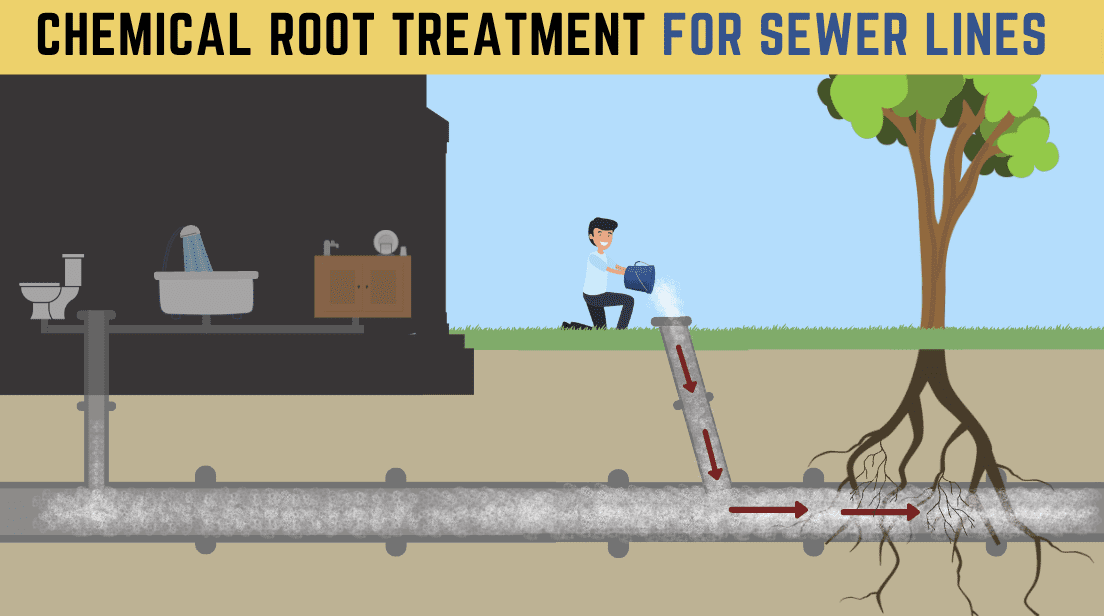
Not all chemical root killers are effective. We provide a root treatment that is foaming and consequently will reach all the walls of the sewer pipe. The foam sits on the walls of the pipe for a time allowing the treatment to kill the root intrusions in the sewer line. Eventually, the roots will break down and be flushed through the sewer line.
Ideally, root treatment and augering will be most effective at removing the roots.
There are many hardware store root killers for sewer lines, and DIY remedies, but these are less effective. For example, unless the chemical treatment is foaming it may not reach the affected area of the pipe before it moves through the sewer line.
Augering, hydro-jetting, and chemical root treatments are short-term solutions but a sewer repair or replacement will ensure that roots are no longer able to grow back into the sewer line.



